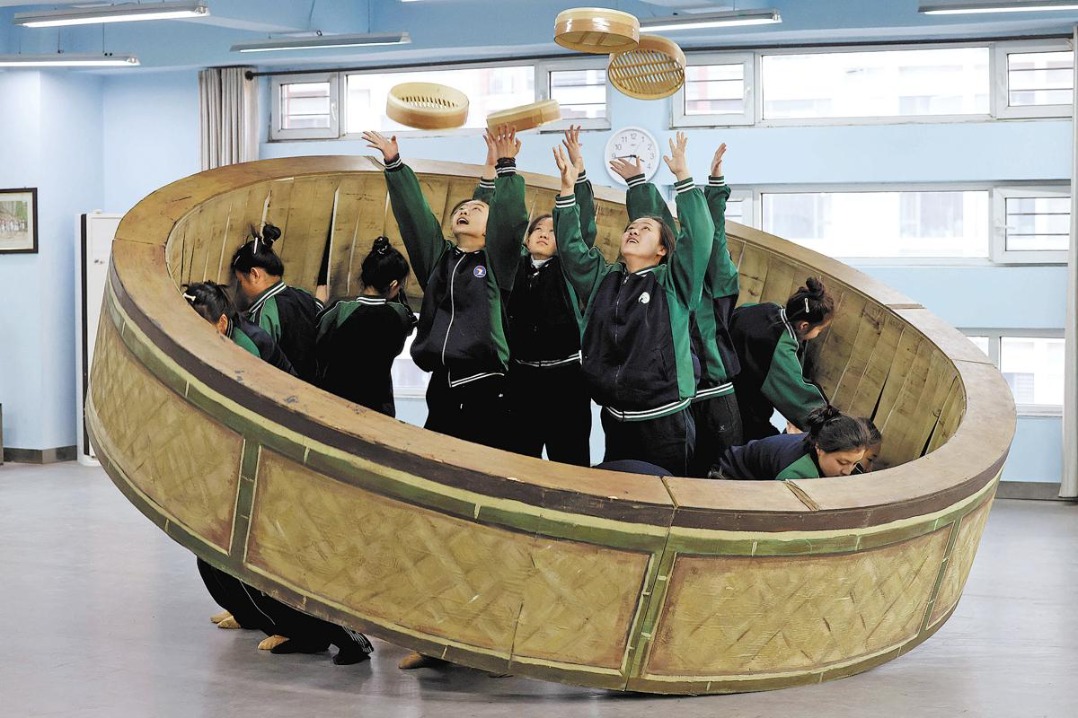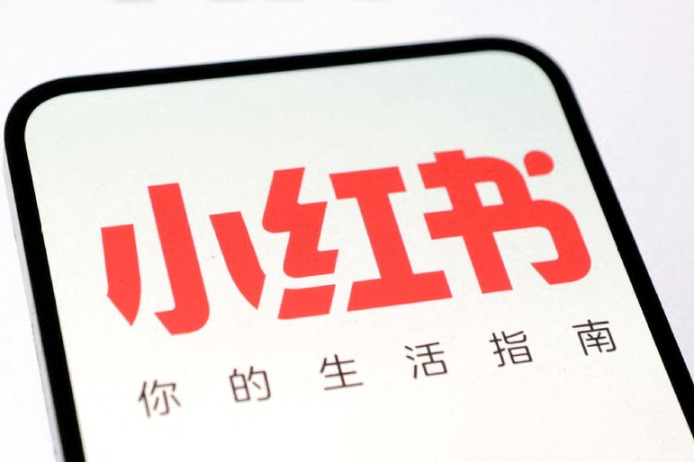Bee your best

| Bee-shaped pin and necklace. Photos provided to China Daily |
With an insect of Napoleonic stature, French jewelry maker Chaumet puts its stamp on style. Gan Tian follows the glittery buzz.
As a man, Charles Leung, Chaumet's managing director for Asia Pacific, seldom wears jewelry - but he decorated his formal suit with a small pin last week when he appeared in Beijing. The delicate pin, smaller than a nail, was in the shape of a bee. Set in white gold, it was decorated with diamonds and sapphires. It is featured in Chaumet's ongoing exhibition, held at the city's luxury-gathering Shin Kong Place. "It is not that showy, but can represent the wearer's social statue and his special taste," Leung said.
| Model shows a high-end necklace at the Chaumet exhibition. Photos provided to China Daily |
The French label's exhibited jewels are titled Lune de Miel, which tells a love story of a spider and a bee.
There are rings, earrings, necklaces and bracelets made of white gold. At the exhibition's opening party, Hong Kong's 51-year-old actress Cheire Chung wore a high-end necklace from the series. The 2-million-yuan jewelry piece has the colors of a bumblebee, featuring a 10.31-karat yellow diamond and 267 white diamonds.
"I love the designs inspired by bees. In different ages and cultures, bees are symbols of being wise, diligent, and royal," Chung said.
Beyond Lune de Miel, bees are very important to this French label. They represent Napoleon's empire.
According to the legend, when Napoleon was a baby a bee landed on his lips, a sign that he would become a great leader.
It not only represents power, but also evokes "sweetness", "love", and "honeymoon".
"Actually, there are many jewelry pieces inspired by bees in Chaumet's collection, which has always been associated with royal families.
"It sends a message to our potential customers: Chaumet is high-end, luxurious, and delicate," Leung says.
Chaumet's founder was Marie-Etienne Nitot, who was Napoleon Bonaparte's jeweler. His creations included not only the Napoleon Tiara and the Imperial Sword, but also some expensive pieces for Napoleon to give to his wife and sisters.
"He put his feelings into every jewelry piece, so affections, expressed by jewelry, are Chaumet's core value," Leung says.
"Every customer visiting Chaumet's boutique store will ask: 'What is the story behind a pair of earrings, a necklace or a bracelet?'"
But such an old label is comparatively new to the Chinese market. Cartier opened its first store in 1990 (with 33 boutique stores today), Tiffany in 2001, and Bulgari in 2003, but Chaumet opened its first boutique store in Shanghai's Plaza 66 only three years ago.
Though not revealing specific sales numbers, Leung says the market here is "incredibly good".
In 2008, it went to Beijing's Shin Kong Place, inviting French actress Sophie Marceau to the opening. During the last year, however, the house opened 12 stores in the Chinese mainland, and it has already expanded to second-tier cities, including Liaoning's Dalian, Shanxi's Taiyuan, Jiangsu's Suzhou and Fujian's Xiamen.
"Chinese consumers begin to grasp the ideas of 'label jewelry' within these years. Generally speaking, they prefer jewelry made from rose gold. Rings and watches usually are their first choice," Leung says.
Just like in the clothing industry, every jewelry label has its unique style, too, and China's consumers are learning more about them. The dazzle of these shining diamonds and precious stones will make Chinese consumers feel they are getting closer to the world's luxurious life.
| Chaumet's Lune de Miel series tells a love story of a spider and a bee. Photos provided to China Daily |
Today's Top News
- China looks to strengthen LAC relations with release of policy paper
- Group of Friends of Global Governance established
- China's CPI up 0.7% in November
- Governance of China an inspiring path
- Sharper focus on expanding demand seen
- FM: Facts prove Tokyo wrong on Taiwan

































